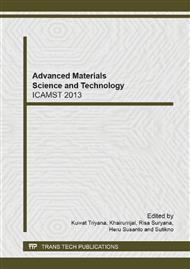p.600
p.605
p.609
p.613
p.617
p.621
p.626
p.633
p.638
Effect of Copper Addition on the High Temperature Oxidation of Zirconium Alloy ZrNbMoGe for Advanced Reactor Fuel Cladding Material
Abstract:
The zirconium alloys ZrNbMoGe have been developed with the aim to improve its high temperature oxidation for employment as a cladding material in Pressurized Water Reactor (PWR) and to extend the over all fuel burn-up. In this paper the effect of Cu addition on the high temperature oxidation behavior of ZrNbMoGe alloy was investigated. The zirconium alloy was produced by melting the zirconium-niobium-molybdenum-germanium and copper-sponge in an arc furnace in an argon environment by the temperature higher than 1850C. The weight percentages of the elements were 2.50 wt.% Nb, 0.5 wt.% Mo, 0.1 wt.% Ge, 0.5 wt.% Cu and Zr in balanced. The oxidation test was carried out in the Magnetic Suspension Balance (MSB) workstation. Two specimens of ZrNbMoGe alloys without and with Cu addition were oxidized in atmosphere at temperature of 500 °C and 700 °C for 8 hours. The results show the oxidation kinetics followed the parabolic rate law. The difference of oxidation behaviors of the two specimens were considered to be caused by the formation of different kind of oxide layers due to the Cu addition.
Info:
Periodical:
Pages:
617-620
Citation:
Online since:
February 2014
Authors:
Keywords:
Price:
Сopyright:
© 2014 Trans Tech Publications Ltd. All Rights Reserved
Share:
Citation:


